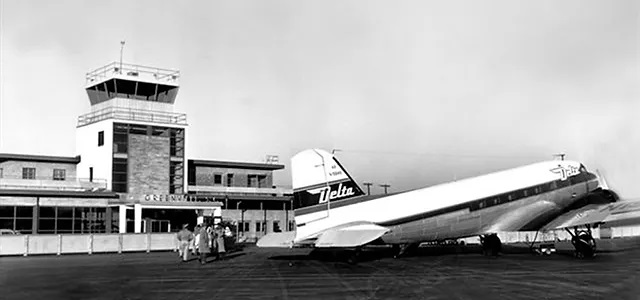The New Year’s Day March, the first major civil rights demonstration in South Carolina, was a 1,000-person march that protested segregated facilities at the Greenville, South Carolina Municipal Airport (Now Greenville Downtown Airport) on January 1, 1960. The march was prompted by Jackie Robinson and Richard Henry being barred from using a whites-only waiting room.
In February 1959, Richard Henry, an African American civilian Air Force employee, planned to fly from Greenville Municipal Airport to Detroit, Michigan. Henry was ordered to sit in the “Negro” waiting room. When he refused, airport manager O.L. Andrews told him he was not permitted to sit in the whites-only waiting room.
With the aid of the NAACP, Henry filed a lawsuit claiming denial of the equal protection clause granted by the Fourteenth Amendment. He retained two attorneys, Willie T. Smith of Greenville and Lincoln Jenkins of Columbia, South Carolina, for the case. As Henry’s case was pending, on October 25, 1959, Major League Baseball player Jackie Robinson was scheduled to speak at an NAACP banquet at Springfield Baptist Church in Greenville. Robinson flew from New York City to Greenville, where an African American delegation awaited his arrival. They were told they were in the whites-only waiting room and would have to move to the colored section. When they refused, Andrews threatened the entire group with arrest. He specifically instructed Greenville police officers to arrest any in the group who re-seated themselves in the whites-only waiting room. Robinson’s plane arrived, and he left with the delegation before the confrontation escalated. Robinson spoke at the banquet about the incident at the airport and urged African Americans to fight for “complete freedom” by voting, protesting racial inequality, and never losing their self-respect.
After the banquet, Robinson was accompanied by NAACP executive director Gloster Current, and the two returned to the Greenville Municipal Airport to fly out of the city. Robinson and Current sat in the white-only waiting room. While Robinson was signing autographs for fans, Andrews told the two to move to the colored section, which they refused to do. Robinson and Current boarded the plane without further incident.
On January 1, 1960, Reverend James Hall and T.B. Thomas organized a march to protest the segregationist policies of the Greenville Municipal Airport. Hall and Thomas were assisted by the NAACP and Congress of Racial Equality (CORE). The march would protest the segregated facilities at the airport and voice outrage at the racism that Robinson experienced there. The original plan was for around 5,000 people to march in protest, but 1,000 people from the Springfield Baptist Church gathered instead at the airport. South Carolina Governor Fritz Hollings dispatched local police and highway patrol to guard the protestors who sang “America the Beautiful.” Rev. Hall later called the march a “prayer pilgrimage.”
When the protestors arrived at the airport, they encountered a crowd of 300 whites, including members of the Ku Klux Klan. Nonetheless, a delegation of fifteen African-American ministers entered the airport on behalf of the protestors and read a resolution regarding the reasons for the protest.
The march and demonstration lasted between four to five hours and occurred without any arrests or violence. The following year, 1961, the Greenville Municipal Airport would be desegregated by court order following the Henry v. Greenville Airport Commission ruling.


